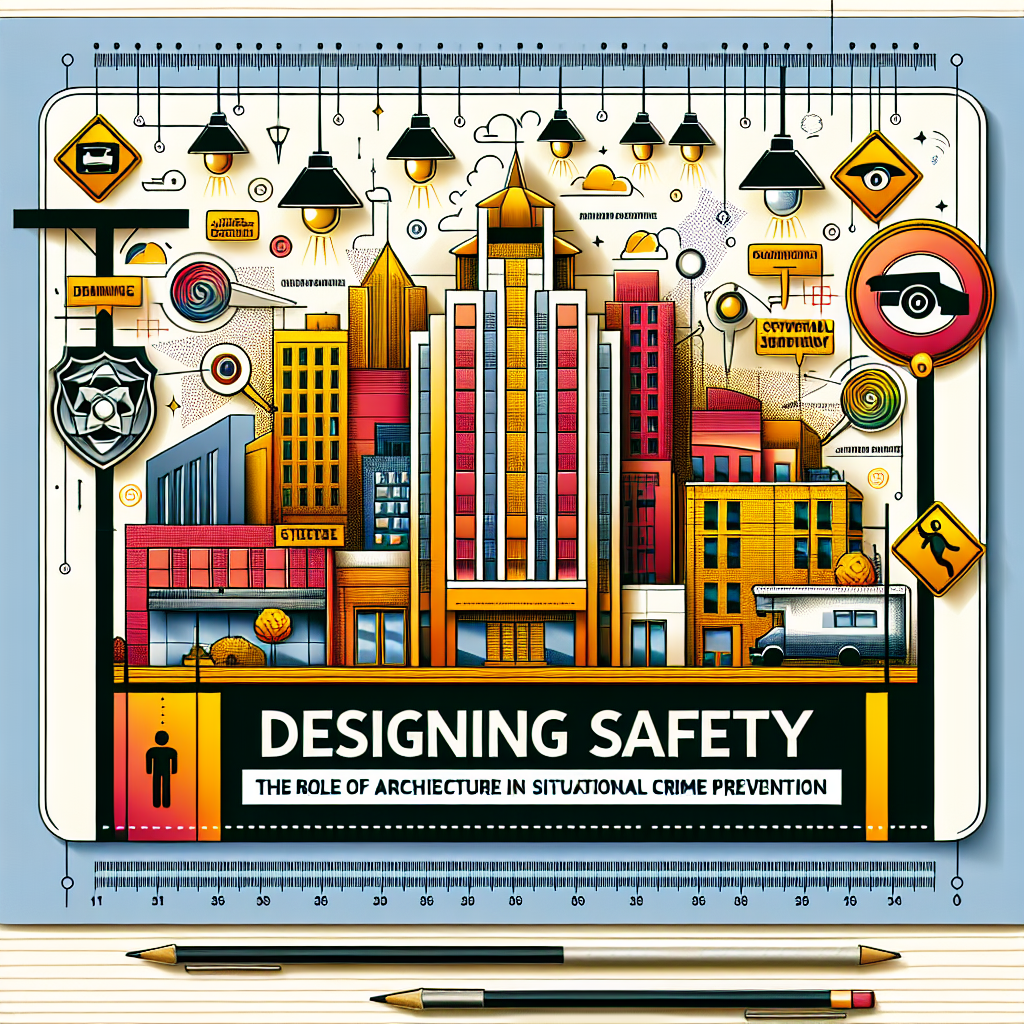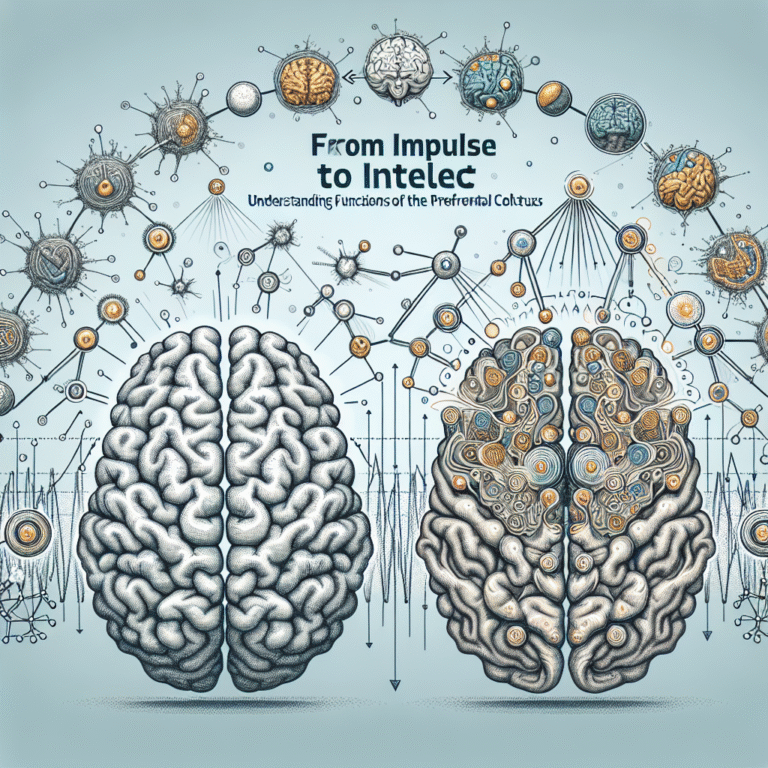
Introduction
In a world increasingly conscious of safety and security, the built environment has a profound impact on crime prevention strategies. The intersection between architecture and crime deterrence is where we find the fascinating concept of Designing Safety: The Role of Architecture in Situational Crime Prevention. This multifaceted approach seeks to reimagine urban landscapes, residential homes, and public spaces in a way that not only enhances aesthetic value but also reduces the likelihood of criminal activity.
Every year, cities grapple with rising crime rates and the search for effective solutions. It is within this context that we explore how innovative architectural designs can contribute significantly to situational crime prevention, blending functionality with a commitment to safety. Join us as we delve into the principles, strategies, and real-world applications that make Designing Safety: The Role of Architecture in Situational Crime Prevention a crucial area of study and practice.
Understanding Situational Crime Prevention
What is Situational Crime Prevention?
Situational Crime Prevention (SCP) is a crime reduction strategy focusing on the environment rather than the criminal. It operates on the premise that crime is not merely a product of social factors but can also be influenced by the design of physical spaces. By understanding the situational contexts in which crimes occur, architectural strategies can be employed to alter these environments, making them less conducive to criminal activity.
Theoretical Framework
The foundations of SCP rest on routine activity theory, which posits that for a crime to occur, three elements must be present: a motivated offender, a suitable target, and the absence of capable guardians. Designing Safety: The Role of Architecture in Situational Crime Prevention specifically targets these elements through architectural interventions.
Principles of Designing Safety in Architecture
Natural Surveillance
One of the core principles of crime prevention through environmental design (CPTED) is natural surveillance, which emphasizes visibility. Effective architectural design can encourage open sightlines and accessibility while avoiding hidden corners or blind spots.
For example, homes and public spaces designed with large windows or strategically placed lighting can promote natural surveillance, making potential criminal activity more visible to the public and reducing the likelihood of crime.
Territorial Reinforcement
Creating a sense of ownership can significantly reduce crime. Territorial reinforcement involves defining boundaries through landscaping, fencing, and signage. These architectural elements signal to both residents and potential offenders that a space is cared for and monitored.
Case Study: La Brea Tar Pits, Los Angeles
The redesign of the La Brea Tar Pits involved landscaping that enhances visibility and creates inviting spaces. By incorporating open areas and community engagement points, architects fostered a sense of ownership and pride, leading to a decrease in vandalism and other criminal activities.
Access Control
Limiting access to certain areas can deter unauthorized entry, thus minimizing opportunities for crime. This principle can be observed in both urban and residential settings. Fences, gates, and controlled entry points to community areas can be crucial.
Case Study: The High Line, New York City
The transformation of the High Line from an abandoned railway into a vibrant public park included multiple access points designed for controlled entry. The design allows for visibility into the park from adjacent buildings, making policing more manageable and reducing incidents of crime.
Maintenance
Environmental maintenance plays a pivotal role in sustaining safety in the built environment. Well-maintained spaces convey the message that they are watched over, deterring misconduct. Architectural designs can incorporate durable materials and adaptable layouts that are easy to maintain.
Case Study: The East Lake Community, Atlanta
After a significant redevelopment effort aimed at revitalizing the East Lake community, the emphasis on aesthetics and upkeep led to a substantial decline in crime. Regular maintenance of green spaces and communal areas communicated a strong community presence, reducing the allure for potential offenders.
Implementing Design Strategies
Collaborative Approach
Successful implementation of safety designs requires collaboration among architects, city planners, law enforcement, and community members. This multidisciplinary engagement ensures that safety strategies are context-specific and culturally appropriate.
Community Involvement
Incorporating community input in the design process not only enhances the relevance of architectural features but also instills a collective responsibility toward safety. Engaged communities are more likely to look after designated spaces and report suspicious activities.
Measuring Effectiveness: Data and Research Findings
Assessing Impact
To understand the efficacy of architectural interventions in situational crime prevention, it is vital to collect data pre- and post-implementation. This can include crime statistics, community surveys, and observational studies.
Table 1: Effect of Architectural Changes on Crime Rates
| Location | Type of Intervention | Crime Rate (Before) | Crime Rate (After) |
|---|---|---|---|
| East Lake, Atlanta | Community redevelopment and maintenance | 45% increase | 30% decrease |
| High Line, New York | Controlled access and surveillance | 25% reported crime | 10% reported crime |
| La Brea Tar Pits, L.A. | Enhanced visibility and landscaping | 30% increase | 15% decrease |
The Future of Safety in Architectural Design
Innovations and Trends
As urban landscapes evolve, so too do the technologies and methodologies employed in Designing Safety: The Role of Architecture in Situational Crime Prevention. Smart building technologies, such as real-time surveillance and communication systems, offer new avenues for enhancing safety.
Sustainable Practices
Sustainable architecture is on the rise, contributing to both environmental and personal safety. Green spaces, renewable materials, and energy efficiency not only reduce crime but improve overall community well-being.
Conclusion
Designing Safety: The Role of Architecture in Situational Crime Prevention is not merely a theoretical framework but a practical and essential approach to enhancing safety in our daily lives. By understanding and applying the principles of natural surveillance, territorial reinforcement, access control, and maintenance, we can shape environments that deter crime and foster community.
As urban planners, architects, and community members collaborate to create safer living spaces, we must remember that safety is a shared responsibility. Engaging in these practices not only contributes to reducing crime but empowers communities to take ownership of their environments.
In a world that increasingly values safety, let us advocate for designs that promote security and vitality, ultimately inspiring a culture of care and community.
FAQs
1. What is Situational Crime Prevention?
Situational Crime Prevention focuses on modifying the environment to reduce crime opportunities by altering physical spaces and increasing surveillance.
2. How does architectural design influence crime rates?
Architectural design influences crime rates by incorporating features that promote visibility, ownership, and controlled access, thereby deterring criminal behavior.
3. Can communities participate in designing safer environments?
Yes, community involvement is essential. Engaging residents in the design process fosters a sense of ownership, encouraging them to maintain and protect their spaces.
4. What are some examples of successful architectural interventions?
Examples include the revitalization of East Lake in Atlanta and the High Line in New York City, both of which have seen crime reductions due to intentional design elements.
5. How do maintenance practices impact crime prevention?
Regular maintenance of public spaces communicates that these areas are cared for, discouraging vandalism and other misconduct. Well-kept environments are more likely to be used by residents, fostering community engagement.
This exploration of Designing Safety: The Role of Architecture in Situational Crime Prevention offers insights not only into the theoretical frameworks but also practical applications. By leveraging architectural design thoughtfully and proactively, we can foster safer, more inclusive communities where everyone thrives.















